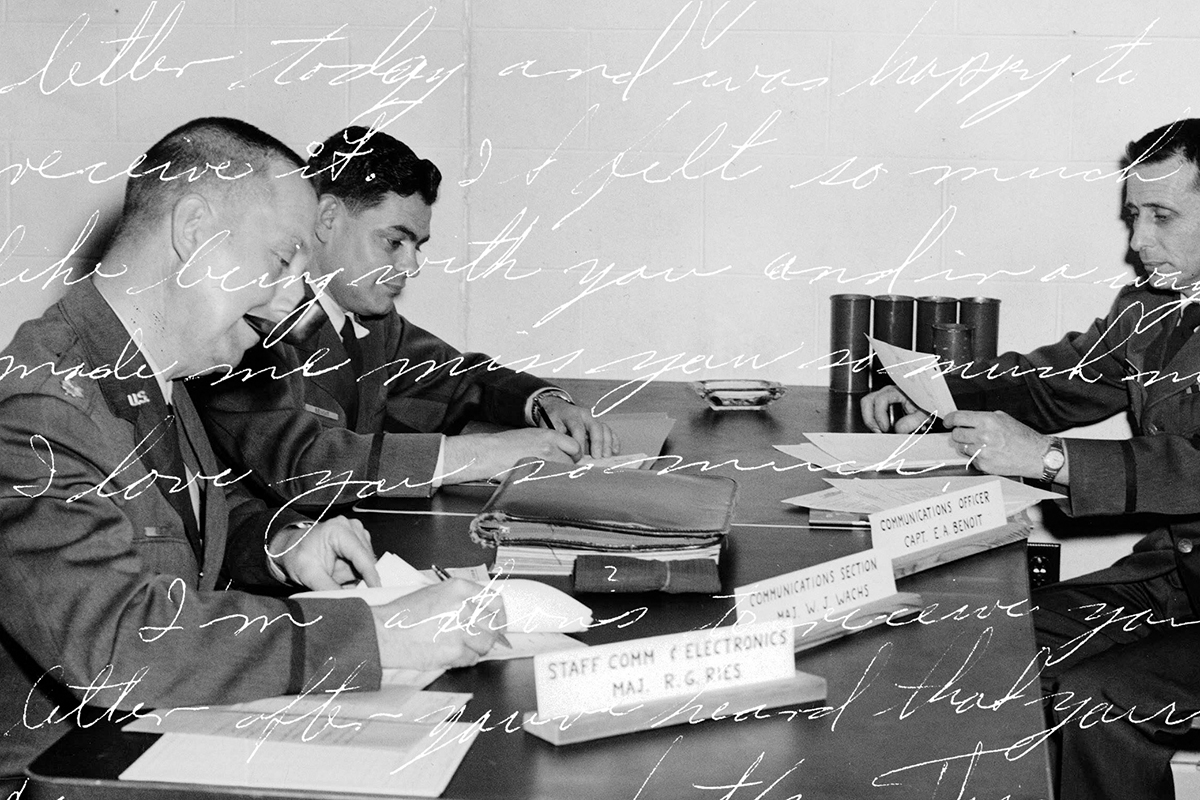Virtual Footlocker Project Helps Soldiers, Archivists Save Military Memorabilia
November 09, 2022
Preserving Mementos of War and Service
For the vast majority of Americans, things that tell stories of war are found in archives and museums. But for those who serve in the military, such objects are also found in attics and garages, in closets and under beds and—increasingly—on digital devices. Some of these keepsakes eventually make their way into archives and museums, as they’re donated by veterans and their families, but when they don’t, some aspect of the story of the American war experience inevitably goes untold.
“I kept coming back to this question; how do you pass down a bunch of emails?” said Edward Benoit III, associate professor in the LSU School of Library & Information Science.
For the past several years, Benoit has directed the LSU Virtual Footlocker Project. When his father, an Air Force veteran like himself, died in 2011, Benoit inherited his father’s physical footlocker, a box filled with handwritten letters, photographs, journals and other memorabilia.
“As a trained archivist, I couldn’t help wondering how the people I served with, especially with the advent of social media around the time of Operation Enduring Freedom and Operation Iraqi Freedom, would pass on their memories,” Benoit said.
The Virtual Footlocker Project website now offers best practices and protocols for how to identify, organize, store and preserve military memorabilia for active-duty military and veterans as well as archivists (and everyone else) to make sure personal memorabilia isn’t lost, hidden, forgotten, or destroyed, but instead can become part of our shared history and social memory.

LSU School of Library & Information Science Associate Professor and Virtual Footlocker Project Director Edward Benoit III’s father, retired Air Force Major Edward Benoit, Jr. (further from the camera), was an officer in the Air Force and sent many handwritten letters back home. Once he returned from service, many of those letters were stored inside a physical footlocker, which upon his death became the inspiration for the LSU Virtual Footlocker Project.
– Photo courtesy of Edward Benoit III, LSU
“Personal items that have been saved and preserved by veterans and their families form a large part of our collection... For those serving in the military and for veterans, as well as archivists and museum professionals, the resources provided as part of the LSU Virtual Footlocker Project serve as a comprehensive guide to documenting and safeguarding a legacy of service.”
Kimberly Guise, senior curator and director for curatorial affairs at the National WWII Museum in New Orleans


